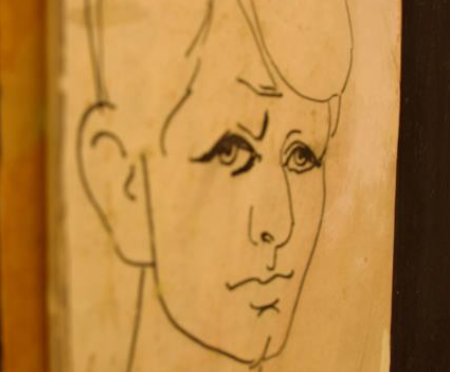How Lipman’s “caring thinking” theory for human thought may encourage the safeguarding of industrial and technological heritage
DOI:
https://doi.org/10.14568/cp28987Keywords:
Lipman, Caring thinking, Decision making, Empathy, EthicsAbstract
This paper describes the potential for “caring thinking” of Matthew Lipman’s philosophy to be applied from education to museological practice to enhance new decision-making models for conservation. “Caring thinking” is crucial when applied from education to heritage conservation, as it does not only concern the treatment of the deteriorated parts of any industrial object but the truth, the museological content that lies beyond the aesthetic or historical values that have to be thoroughly examined. The Lipman theory articulates complex modes of thought that include: a) valuational, b) affective, c) active, d) normative and e) the empathy of man for human ingenuity, effort and expectations. This effort, reflects the need for the industrial and technological heritage conservator not only to extend the life-span of the collections but to strive to retain their intangible value and enhance the viewer’s museological engagement with them.
Downloads
References
Cam, P., ‘Matthew Lipman (1923-2010)’, Diogenes 58(4) (2011) 116-118, https://journals.sagepub.com/doi/10.1177/0392192112462202.
Lipman, M., ‘Caring as thinking’, Inquiry: critical thinking across the disciplines 15(1) (1995) 1-13, https://doi.org/10.5840/inquiryctnews199515128.
Bornstein, J. C. L., ‘Towards an understanding of Matthew Lipman's concept of caring thinking’, The Journal of Philosophy for Children 16(3) (2003) 17-24, https://doi.org/10.5840/thinking20031634.
Heidegger, M., Being and time, Blackwell publishers, Oxford (1962), http://pdf-objects.com/files/Heidegger-Martin-Being-and-Time-trans.-Macquarrie-Robinson-Blackwell-1962.pdf (accessed 2023-2-01).
Petrou, A.; Chatzivasili, G., H σκέψη στη φιλοσοφία για παιδιά: διάλογος και προοπτικές [Thinking in Philosophy for children: dialogue and perspectives], Diadrasi Editions, Athens (2022).
Ηeld, V., The ethics of care: personal, political, and global, Oxford University Press, Oxford (2007).
Caruana, C.; Gatt, I.; Vella, R.; Zammit, C., ‘A politics of care and responsibility: art and education for sustainable development research’, Arts and Education 4 (2021) 236-258, https://doi.org/10.54916/rae.119523.
Dominguez Rubio, F., ‘Preserving the unpreservable: docile and unruly objects at MoMA’, Theory and Society 43 (2014) 617–645, https://doi.org/10.1007/s11186-014-9233-4.
Muñoz-Viñas, S., ‘The artwork that became a symbol of itself’, in Theory and practice in the conservation of modern and contemporary art, eds. A. Weyer and U. Schaedler-Saub, Archetype, London (2010), 11–22, https://www.academia.edu/44683434/The_artwork_that_became_a_symbol_of_itself (accessed 2022-12-12).
Willis, E.; Henderson, J.; Hamilton, P.; Toffoli, L.; Blackman, I.; Couzner, L.; Verrall, C., ‘Work intensification as missed care’, Labour and industry 25(2) (2015) 118-133, https://doi.org/10.1080/10301763.2015.1060811.
Hölling, H. B.; Bewer, F.; Ammann, K., ‘Material encounters’, in The explicit material: inquiries on the intersection of curatorial and conservation cultures, eds. H. B. Hölling, F. Bewer and K. Ammann, Koninklijke Brill, Leiden (2019) 1-14.
Philippot, P., ‘Restoration from the perspective of the humanities’, in Historiacal and philosophical issues in the conservation of cultural heritage, eds. N. Stanley-Price, K. M. Talley and A. M. Vaccaro, Getty Conservation Institute, Los Angeles (1995) 216-229.
Ferianni, B., ‘How to pass on an idea’, in Ephemeral monuments, History and conservation of installation art, eds. B. Ferriani and M. Pugliese, Getty Conservation Institute, Los Angeles (2013) 93-129.
Saaze,V.,Installation Art & the Museum, Amsterdam University Press, Amsterdam (2003).
Wielocha, Α., ‘Τhe artist interview as a platform or negotiating an artworks possible futures’, in Sztuka I Dokumentacja 17 (2018) 31-45, https://incca.org/artist-interview-platform-negotiating-artworks-possible-futures-2018 (accessed 2022-12-12).
Wielocha, Α., ‘Αrt objects as documents and the distributed identity of contemporary artworks’, Art Matters International journal for Art History, Special Issue 1 (2021) 106-113, https://www.academia.edu/52700050/Art_Objects_As_Documents_and_the_Distributed_Identity_of_Contemporary_Artworks (accessed 2022-3-3).
Hiiop, H., ‘The Possibility of patina in contemporary art or, does the "New Art" have a right to get old?’, in Koht ja Paik. Place and location. Studies in environmental aesthetics and semioticsVI, eds. E. Näripea, V. Sarapik, and J. Tomberg, Eesti Kunstiakadeemia Kirjastus, Tallinn (2008) 153−166, http://www.eki.ee/km/place/pdf/kp6_10_hiiop.pdf (accessed 2023-05-17).
Cohnitz, D.; Rossberg, N., Nelson Goodman, Philosophy now, vol.2, McGill Queen's University Press, Ontario (2006) 378-379.
Kertemlidou, P., H διαλεκτική της καλλιτεχνικής δημιουργίας με το βιομηχανικό χρηστικό αντικείμενο, Epikentro Editions, Athens (2021).
Koutsoudaki-Gerolymbou, E.; Florou, M., ‘The industrial gas museum in Technopolis’, in Τετράδια Μουσειολογίας 9, eds. A. Gazi and A. Bounia, Kaleidoscope Editions, Athens (2014) 31-36.
Greek Law for the Protection of Antiquities and Cultural Heritage, https://opi.gr/images/library/nomothesia/ethniki/nomoi/3028_2002.pdf (accessed 2022-3-05).
Professional Code of Ethics of Conservator, http://www.onemagazino.com/2021/11/blog-post.html (accessed 2023-4-19).
Tomkins, L.; Bristow, A., ‘Evidence based practice and the ethics of care: "what works" or "what matters?"’, Ηuman Relations 76(1) (2023) 118-143, https://doi.org/10.1177/00187267211044143.
Clavir, M., Preserving what is valued – Museums, conservation, and first nations, UBC Press, Vancouver (2002).
Court, S.; Wijesuriya, G., People-centred approaches to the conservation of cultural heritage: living heritage, ICCROM, Rome (2015) https://www.iccrom.org/sites/default/files/publications/2020-10/traditional-knowledge-systems.pdf (accessed 2023-04-19).
Wijesuriya, G. and Court, S. (Eds.), Traditional knowledge systems and the conservation and management of Asia’s heritage, ICCROM, Rome (2020) https://www.iccrom.org/publication/traditional-knowledge-systems-conservation-and-management-asia%E2%80%99s-heritage%C2%A0 (accessed 2023-04-19).
Wijesuriya, G., ‘Towards the de-secularisation of heritage’, Built Heritage 1(2) (2017) 1-15, https://openarchive.icomos.org/1811/1/Towards_the_De-secularisation_of_Heritag.pdf.
Tronto, J., ‘An ethic of care’, Generations: Journal of the American Society on Aging 22(3) (1998) 15-20, https://www.jstor.org/stable/44875693 (accessed 2020-11-05).
Lipman, M., Thinking in education, 2nd ed., Cambridge University Press, Cambridge (2003).

Downloads
Published
How to Cite
Issue
Section
Categories
License
This work is distributed under a Creative Commons Attribution License (CC BY-NC-ND 4.0) which permits use, distribution, and reproduction in any medium following no commercial or derivatives, provided the original author and source are credited.
Copyright remains with the authors.






